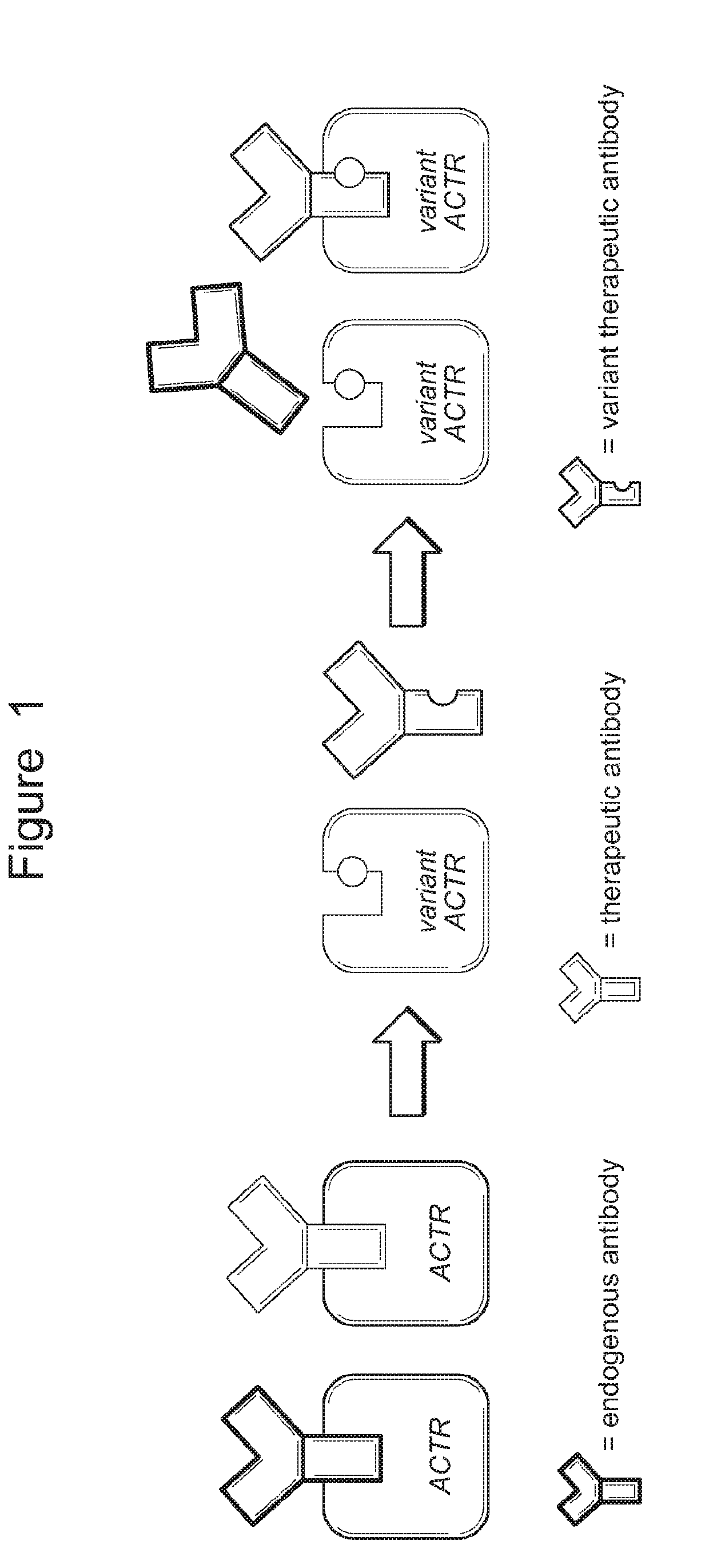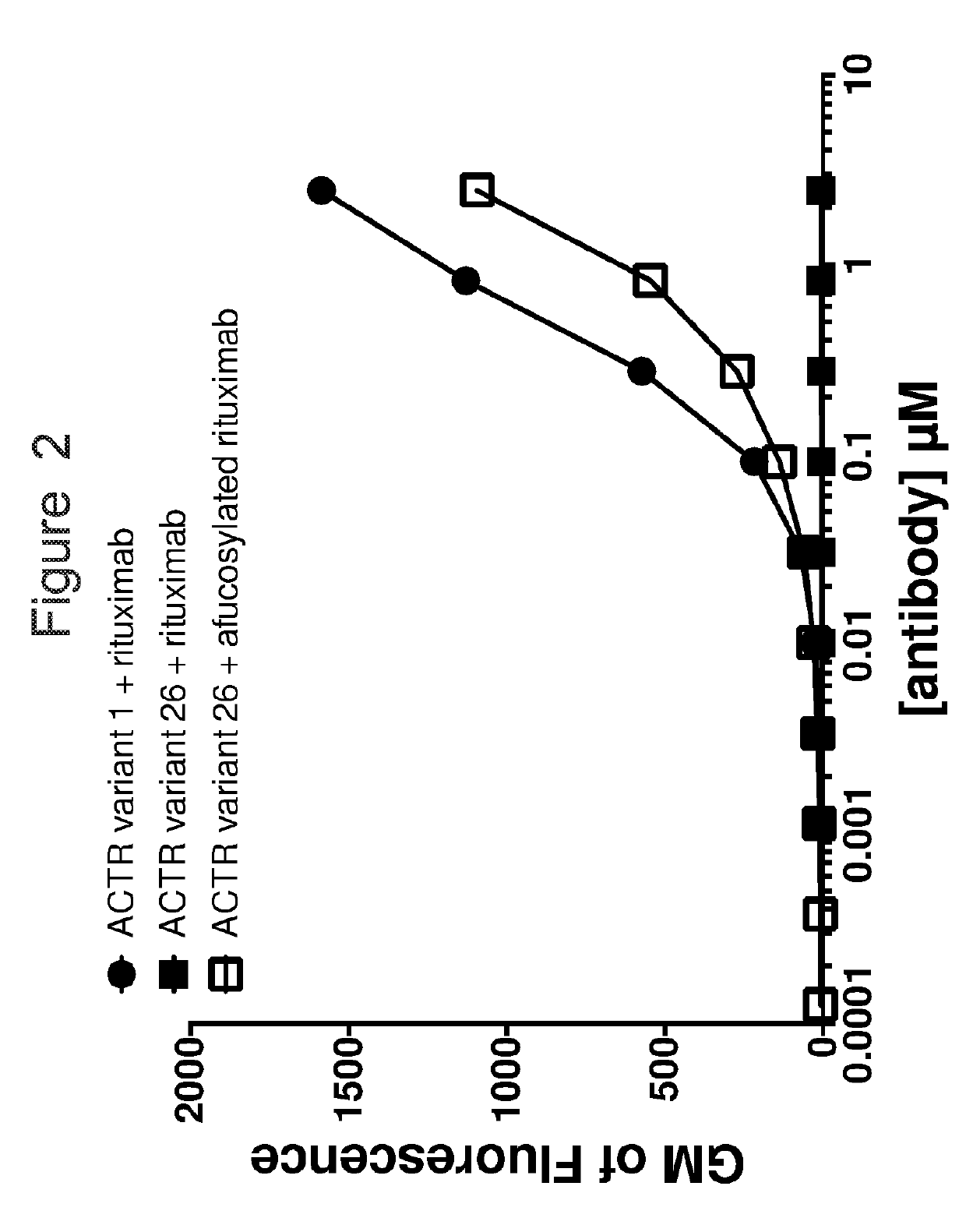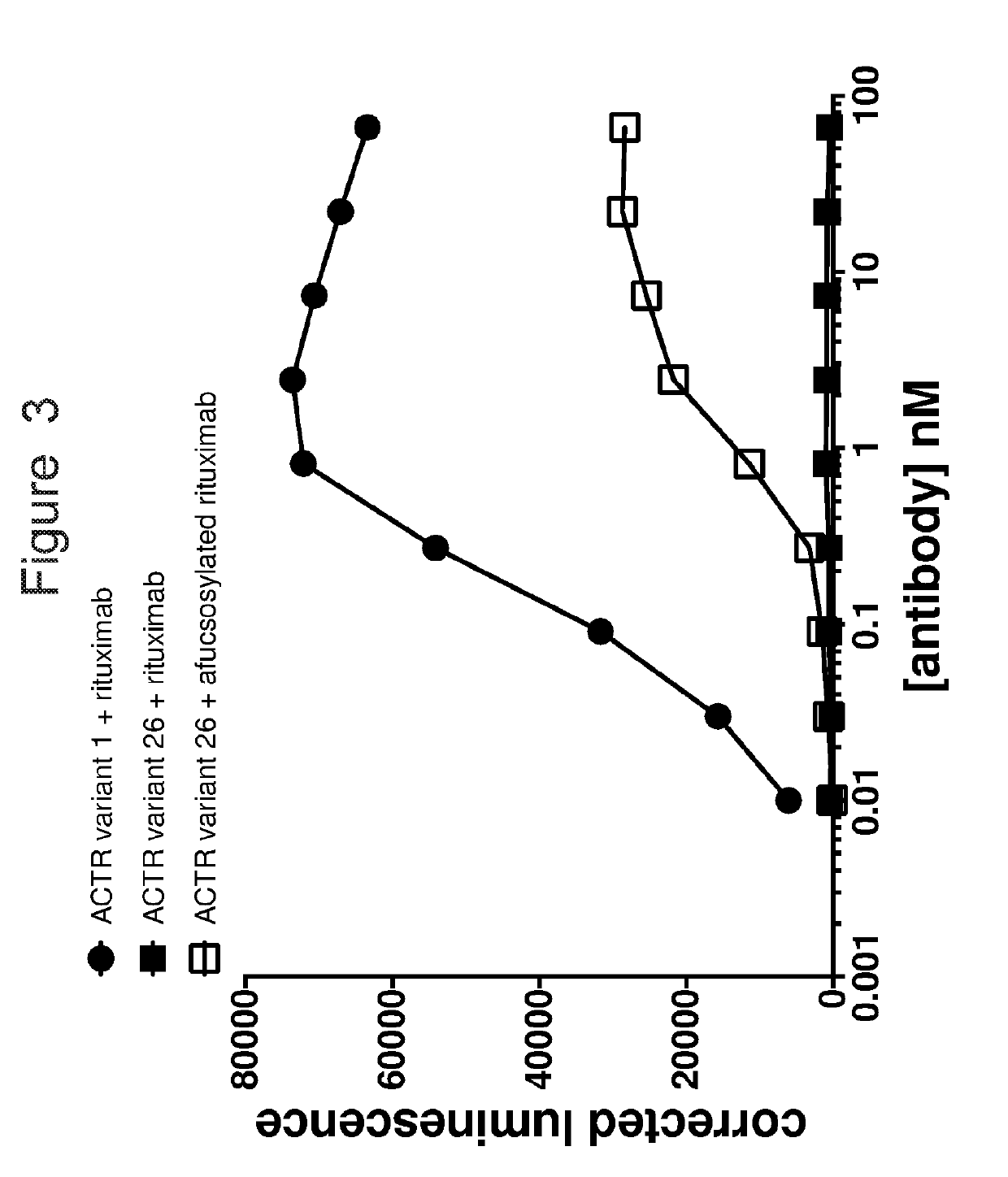Modified chimeric receptors and uses thereof in immune therapy
a technology of chimeric receptors and chimeric receptors, which is applied in the direction of antibody medical ingredients, peptides/protein ingredients, peptides, etc., can solve the problems of cytotoxicity and t cell activation, and achieve the effects of enhancing the efficacy of antibody-based immunotherapies, reducing binding competition, and reducing or eliminating binding competition
- Summary
- Abstract
- Description
- Claims
- Application Information
AI Technical Summary
Benefits of technology
Problems solved by technology
Method used
Image
Examples
example 1
Binding Activity of Wild-Type ACTR and ACTR Variants
[0202]DNA sequences encoding wild-type ACTR (variant 1; SEQ ID NO: 1) and ACTR variant 26 (SEQ ID NO: 2) were generated by standard molecular cloning techniques or chemical synthesis and cloned into plasmids downstream of the T7 RNA promoter element. To generate mRNA, plasmids were linearized by restriction digestion at a site downstream of the ACTR stop codon and purified using a Qiaquick PCR Purification Kit (Qiagen; Hilden, Germany). Linearized plasmid was used as a template for mRNA generation using the T7 mScript mRNA production system (CellScript; Madison, Wis.) according to the manufacturer's instructions. Briefly, 1 μg of linearized plasmid was transcribed with T7 RNA polymerase in a 20-μL reaction volume at 37° C. for 30 min. The DNA template was digested by the addition of DNase I and subsequent incubation at 37° C. for 15 min. The reaction was purified using a MEGAclear Kit (Life Technologies; Carlsbad, Calif.) according...
example 2
ll Activation with Various ACTR-Antibody Pairs
[0209]The ability of different ACTR-antibody pairs to activate Jurkat cells was analyzed in a reporter assay in Jurkat cells that is reflective of Jurkat cell activation. Jurkat cells were transduced with lentivirus encoding firefly luciferase downstream of a minimal CMV promoter element and tandem repeats of the nuclear factor of activated T-cells (NFAT) consensus binding site. In this cell line, upregulation of NFAT transcription factors results in binding to the transcriptional response elements and subsequent expression of luciferase, which is monitored by measuring light produce following luciferase cleavage of its substrate luciferin.
[0210]Jurkat cells with the NFAT reporter system (Jurkat-N) were electroporated with mRNAs encoding ACTR variants to mediate expression of the chimeric receptor variant protein on the cell surface using the Neon Transfection System (Life Technologies; Carlsbad, Calif.) and grown for 2 hr or 16-20 hr in...
example 3
ity Assay
[0214]Gamma-retrovirus was generated that encoded ACTR variant 1 or ACTR variant 26. These viruses were used to infect primary human T-cells to generate cells that express ACTR variant 1 or ACTR variant 26 on their cell surface. Antibody staining for CD16 expression followed by flow cytometry demonstrated that a similar amount of ACTR was expressed in the ACTR variant 1 and ACTR variant 26 cells (FIG. 4A). These cells were used in cytotoxicity assays with CD20-positive Daudi target cells that constitutively expressed firefly luciferase and CD20-targeting rituximab or afucosylated rituximab. Mock T-cells with no ACTR were used as a control in this experiment.
[0215]T-cells (effector; E) and Daudi target cells (target; T) were incubated at a 3:1 effector-to-target ratio (30,000 target cells; 90,000 effector cells) in the presence of different concentrations of rituximab or afucosylated rituximab (0-70 nM) in a 100-μL reaction volume in RPMI 1640 media supplemented with 10% fet...
PUM
| Property | Measurement | Unit |
|---|---|---|
| Volume | aaaaa | aaaaa |
| Volume | aaaaa | aaaaa |
| Volume | aaaaa | aaaaa |
Abstract
Description
Claims
Application Information
 Login to View More
Login to View More - R&D
- Intellectual Property
- Life Sciences
- Materials
- Tech Scout
- Unparalleled Data Quality
- Higher Quality Content
- 60% Fewer Hallucinations
Browse by: Latest US Patents, China's latest patents, Technical Efficacy Thesaurus, Application Domain, Technology Topic, Popular Technical Reports.
© 2025 PatSnap. All rights reserved.Legal|Privacy policy|Modern Slavery Act Transparency Statement|Sitemap|About US| Contact US: help@patsnap.com



